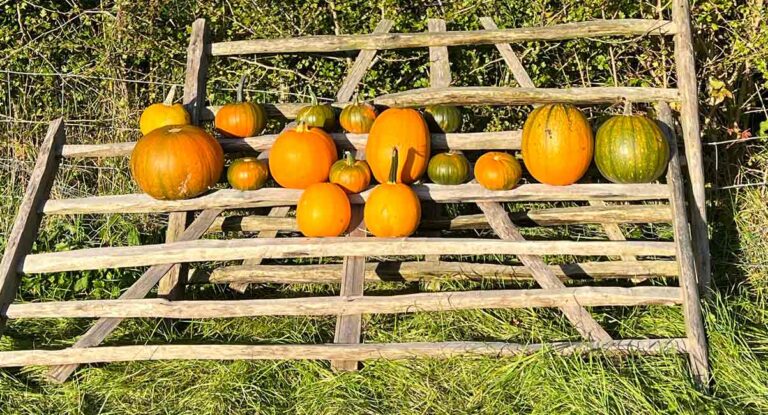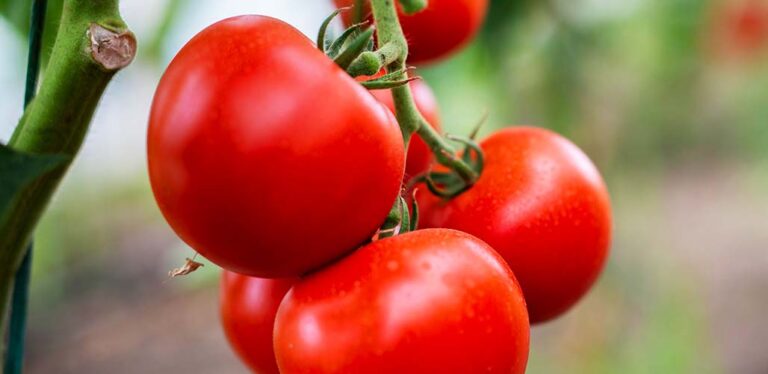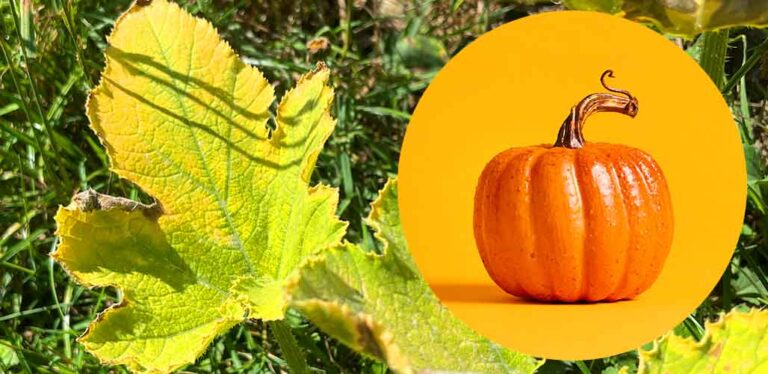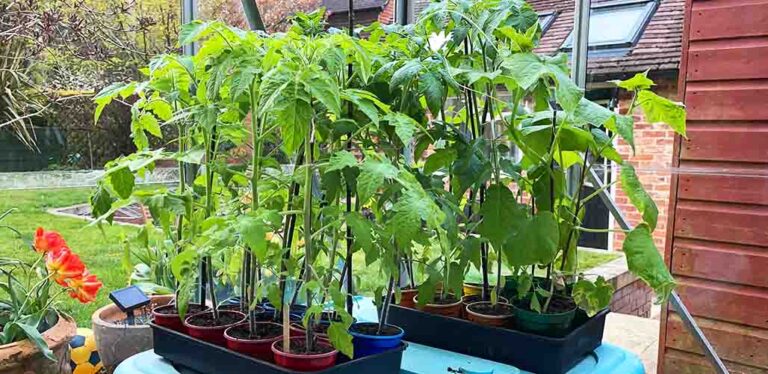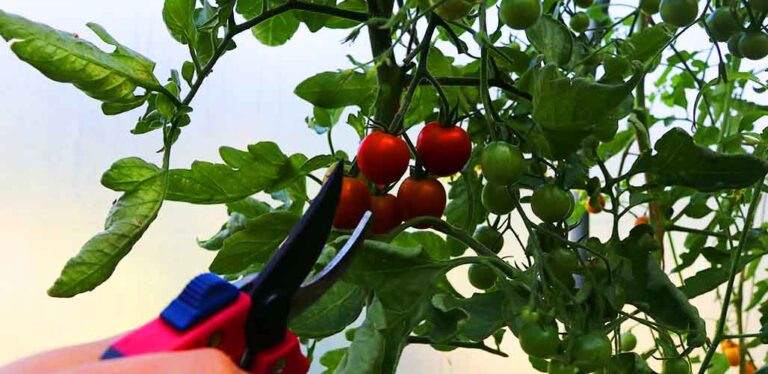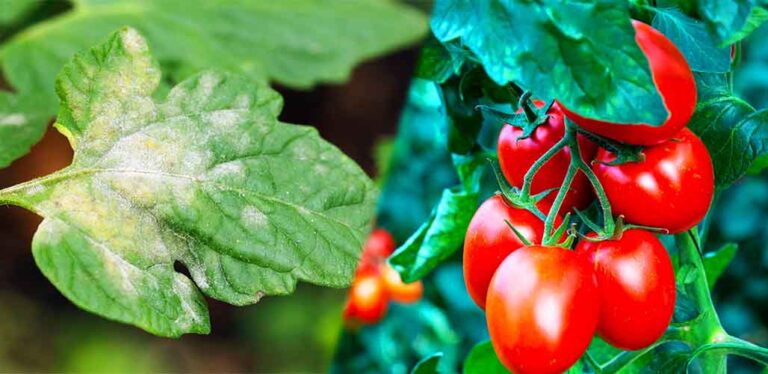Can You Grow Pumpkins In A Pot?
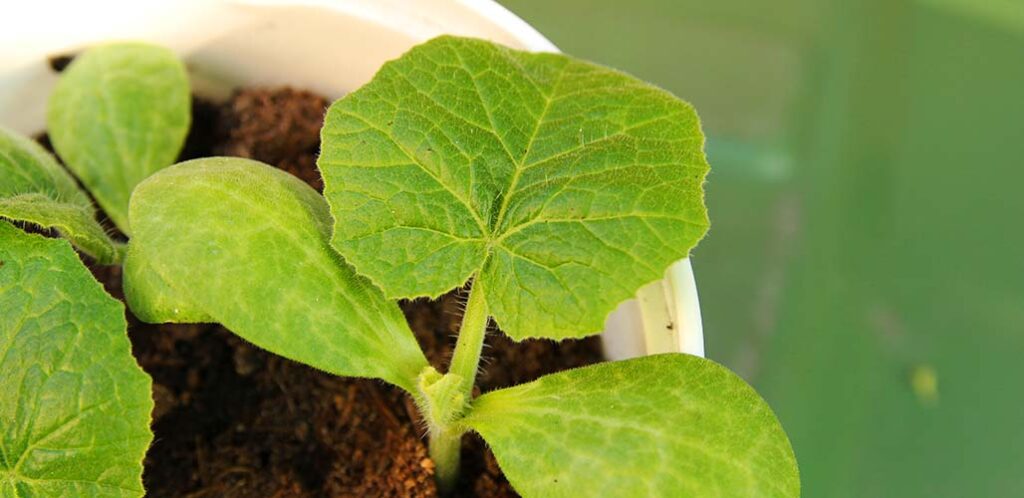
If you are short on space in your veg beds, you may be tempted to grow your pumpkins in a large pot instead. Some pumpkin varieties will thrive in a pot provided you keep them evenly watered and well fed. But other varieties will struggle for space and end up producing lots of leaves and flowers, but no fruit.
I’ve had plenty of adventures (and misadventures) in growing large crops in small spaces, and I’m going to share everything I’ve learned about what works, and what doesn’t!
- Tips for growing pumpkins in containers
- Choosing a suitable pumpkin pot
- The best small pumpkin plant varieties for growing in containers
Pumpkins are usually grown in open ground. This is because they need a lot of space, water, and nutrients to grow and fruit successfully. However, it is possible to grow some smaller pumpkin varieties in pots, provided you don’t mind keeping up with the feeding and watering. There are bush varieties which have a relatively small footprint and are suited to container living. Or you can grow trailing varieties up a trellis. If you’re a novice gardener, starting out with pumpkins in pots is both practical for small spaces, and a good way to take control of providing optimal growing conditions.
Can I grow a pumpkin in a pot?
So in theory pumpkins can be grown in pots. But is it a good idea for you to try it? If you germinate some pumpkin seedlings now, can you hope to achieve glory, or are you destined for disappointment? Here’s a checklist of the things you need to successfully raise pumpkins in pots:
Time. Pumpkins take around 120 days (or 4 months) to go from freshly-sown seed to ripe fruit. Their fruit needs warmth to ripen too – ideally at least 70f during the day. So, in most regions you’ll need to start this project by mid-June at the very latest.
A big pot. Some miniature pumpkins will grow happily in a 10 gallon container. For larger varieties, you’ll need a pot with a capacity of 20 to 25 gallons. We’ll look at some examples of big enough containers in a moment.
An irrigation plan. Pumpkins are thirsty, and plants growing in pots use up all the available water more quickly than plants growing in the ground. A pumpkin in a container won’t survive you taking a two week vacation in August, unless someone else waters it, or you have an irrigation system in place.
A cheerful attitude to spending money on the experience. Pumpkins are greedy! Grown in open ground, a cheap mulch of well-rotted manure or homemade compost goes a long way. In containers, you’re looking at buying two large bags of compost and using it all up on one plant. Plus potentially extra fertilizer, and the cost of the pot if you don’t already have one suitable. Finally, throw in the possibility of losing the plant to pests or disease, and the hardest lesson I’ve learned about growing large crops in containers is that it’s very uneconomical! (But if you do lose your plants mid-season, you can still use the compost for some quick crops, or summer bedding plants!)
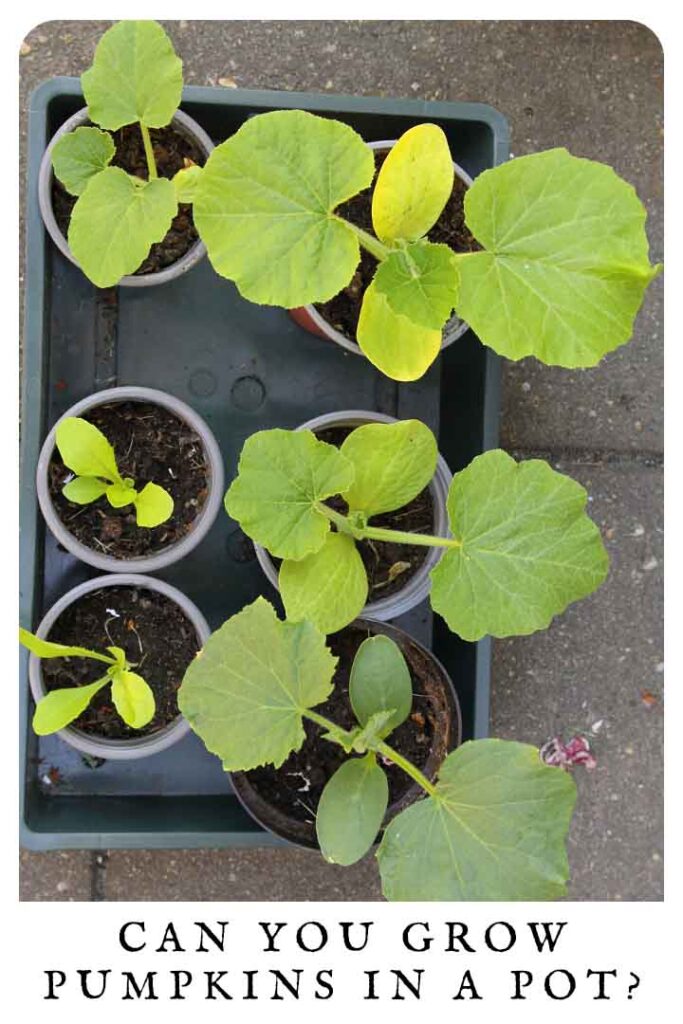
When growing pumpkins in pots is a really good idea
There are some situations when growing pumpkins in pots just makes sense.
- If you’re short on space in your beds – pots can be stood on decking or hard standing instead.
- If your soil is poor quality, sandy, or very heavy. Pumpkins are the Goldilocks of moisture demands, and if your soil is too light or too waterlogged you might be better off using compost in a pot.
- You have a big slug or snail problem. Plants in pots are typically easier to protect from slimy pests than plants in open ground.
- You enjoy experimenting. Sometimes you’ve just got to try a thing before you rule it out in future!
- You’re sowing seeds late. Growing a mini variety in a pot and micro-managing their environment and irrigation is one of the best ways to secure a crop if you’ve left planting your seeds late.
Tips for growing pumpkins in containers
- Choose a miniature variety. Miniature pumpkins are better suited to container living. They need less water, which means they’re less likely to get dried out in a sudden dry spell. This in turn makes them less prone to problems like powdery mildew.
- Position your container in its final position before you fill it. It’s going to be heavy once it’s full! Choose a spot with at least 6 hours of full sunshine a day.
- Check whether you’re growing a bush or climbing variety. And construct a trellis for climbing varieties early on, so you don’t damage the roots. Growing pumpkins vertically up a sturdy trellis is a great way to confine them to roughly the same footprint as their pot. If you’re happy for them to spread horizontally, position them away from paths. It helps to know that when you plant your seedling in its final position, the vine will grow in the opposite direction to the first true leaf.
- Decide if you’re growing for quantity or size. If you’d rather end up with just one or two large fruits for carving, pinch off subsequent flower buds once the first two fruits have started to form.
- Ripe pumpkins can be stored for several months before eating. Sever their stalk as close to the parent vine as possible, and leave them to cure in the sun for several days, before moving to a cool, dark place.
Choosing a suitable pumpkin pot
Pumpkins can grow in lots of vessels besides traditional plant pots. What matters is that their home needs to be big.
Unglazed terracotta pots
Pumpkins are prone to rotting if they sit in waterlogged soil. It’s always a good idea to make sure there is ample drainage out of the bottom of their pots, but unglazed clay pots have the advantage of being porous from the sides as well. However, they are probably the most expensive home for a pumpkin plant, and the heaviest if your plant needs relocating.
Compost sacks
Pumpkins are incredibly greedy, but one sure fire way to give them the space and the food they need is to roll a bag of compost around until you can get it to stand up in the squatest, steadiest shape possible, stab some holes around the sides at ground level for drainage, open the top, and plant your pumpkin straight into bag. This is a great no-fuss approach if you’ll need to buy the compost anyway, but it’s the least aesthetically pleasing.
Grow bags
If you’re already producing your own compost, heavy duty grow bags are a great alternative to pots. They are reusable like pots, but much cheaper, and they can be folded up and stored away out of season. They usually featured sturdy handles for dragging or lifting them too.
Recycled containers
Pumpkins can also be grown in lots of containers which originally had another purpose, provided you drill lots of drainage holes in the bottom. Trash cans, baby baths and old animal troughs are all perfect for housing a pumpkin plant.
The best small pumpkin plant varieties for growing in containers
Giant pumpkins need a lot of water to grow large fruit, which poses an irrigation problem if you grow them in a pot. Small pumpkin varieties need less water, and are usually more flavorsome too – ideal if you like to cook with them.
Small pumpkins are also great for kids. Growing a miniature pumpkin from seed and then decorating it with paints or paint markers is a safe and fun Halloween activity, which neatly side steps the problem of using sharp knives and carving tools.
Here are my favorite pumpkin varieties for growing in pots:
- Jackpot. Probably one of the largest pumpkins you’ll get away with growing in a container. They’re also one of the most versatile varieties for carving and eating. Average fruit size: 20lbs.
- Spirit. Spirit pumpkins are perfect for containers because they remain naturally compact, rather than sprawling for yards. They’re tasty, but they also have a smooth surface which is perfect for carving intricate designs into. Average fruit size: 10lbs.
- Blaze. Blaze pumpkins have it all: they grow from seed to ripe fruit in 100 days flat, they produce up to a dozen eye-catching white and orange striped fruits per plant, they’re delicious, and they’re resistant to powdery mildew. Average fruit size: 3lbs.
- Turks Turban. Also known as Mexican Hat, this is technically a winter squash rather than a pumpkin. Its brightly striped skin and odd bulbous shape earn it top marks for ornamental value. Average fruit size: 5lbs.
- New England Pie. Exactly as the name suggests, this miniature pumpkin is popular with growers because its flavor and texture makes the perfect pie filling. Average fruit size: 4.5lbs.
- Jack-Be-Little. Climbing variety is a little too small to carve, but perfect portion size for one when stuffed and roasted. Average fruit size 10oz.
- Baby Boo. White pumpkins are all the rage at the moment, and this example is cute and classic. Average fruit size: 5oz.
Can you grow pumpkins in a pot? Summary
You can grow pumpkins in a pot! You’ll need to start with a miniature variety, establish whether it is climbing type or bush type, and make sure you keep it well fed and evenly watered.
Are you going to have a go at growing your pumpkins in a container this year? Let us know what variety you tried, the size of the pot, and whether your vines bore fruit, using the comments box down below!
Learn more
- Will your pumpkins need a lot of water?
- What to do if your pumpkin vines aren’t making fruit
- Diagnosing causes of white spots on leaves
- Telling your pumpkin seedlings from your watermelons when the labels get lost

